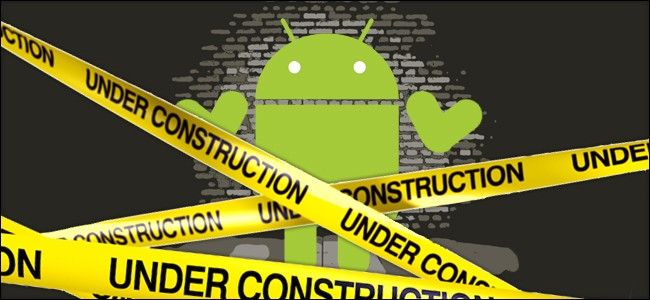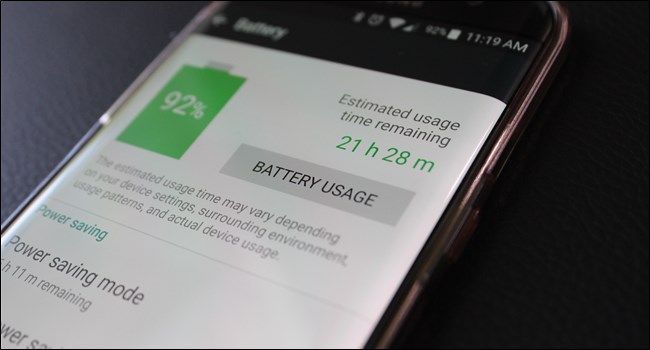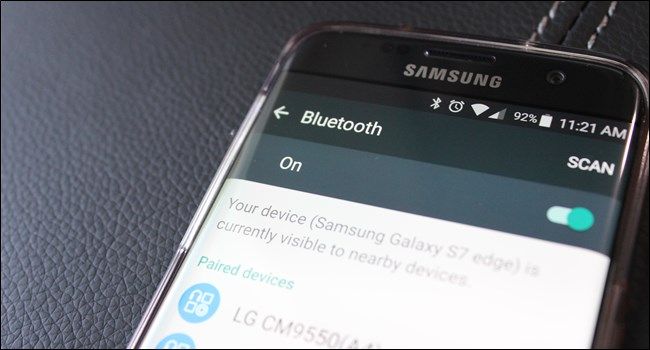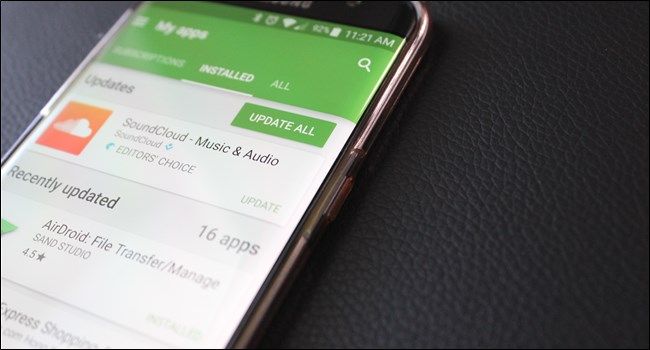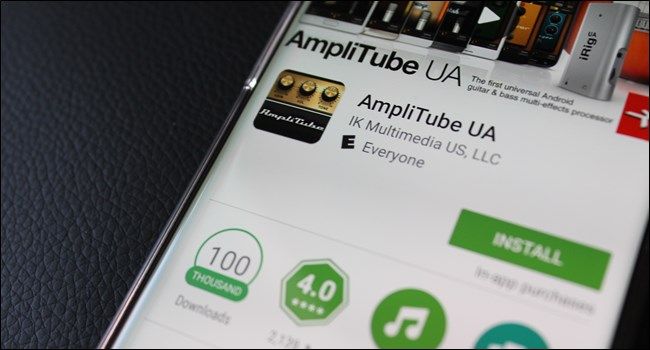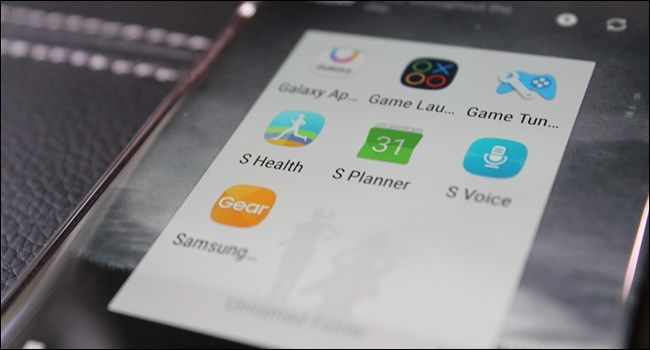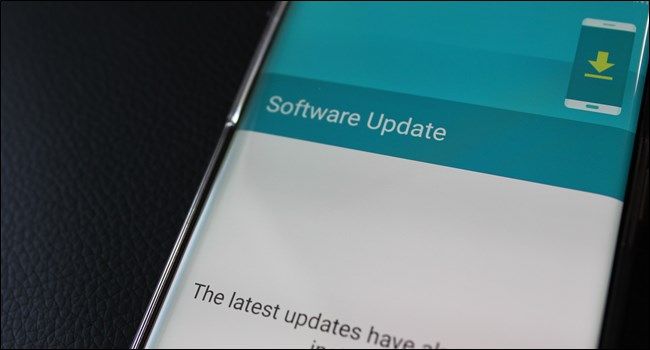Quick Links
Android has come a long way over the last several years. What was once an ugly, sluggish operating system is now a refined, widely-used, excellent mobile OS. While it’s not for everyone, it’s hard to deny or ignore what Google has done with Android. But it isn't perfect—there are things that could simply be done better. Here are six areas where Android as a whole still needs to improve.
Battery Life
We’ve seen great strides in processor and display tech over the last several years, which have gone a long way to aid in the war against crap battery life. But hardware alone isn’t going to change the game. Google has worked tirelessly to also optimize Android’s battery usage, with features like Doze mode taking the spotlight in Android Marshmallow, and getting even more focused use in Android N.
And now we’re almost there. The Galaxy S7/S7 Edge both get excellent battery life—easily a day’s worth of use. But that’s where we need to be for all Android phones at this point. Excellent battery life is one of the main arguments that iPhone users typically make against Android, and it’s rightfully so. Apple has done a great job of optimizing iOS to sip battery, so it’s nice to see Google pushing for that same sort of optimization on Android.
Bluetooth Connections
Ugh, Bluetooth. I use it all the time, but it’s only because there isn’t a simpler or better option out there. I’d like to see more stable and useful Bluetooth connections on Android, with more metadata shared between connected devices. For example, when an iOS device connects to a Bluetooth speaker, the speaker’s battery information shows up in the iOS device’s status bar. This is an incredibly useful feature that I can’t fathom why hasn’t been baked into Android at this point.
But there’s more to it than just that: Bluetooth has historically been less-than-reliable on Android. I’d love to see more reliable and stable connections for Android devices—but unfortunately that’s probably more than just an Android issue. Bluetooth itself just really needs to get better.
App Installation and Device Setup
If you’ve ever gotten a new phone and used your old one to set it up, you already know what I’m talking about here. If you don’t babysit the Play Store to make absolutely sure it installs everything, it’ll undoubtedly get hung up somewhere along the line. I’ve yet to figure out why this happens, but it does—almost every single time. Google Play in general is just bad at bulk installing apps.
To go a step further, Android itself is just pretty bad at installing apps. This is something that Google seems to be aware of, because with Android N is has optimized the download and install process, with some apps (like Facebook), taking a third of the time to install. Hopefully this will also trickle into the device setup and bulk app install process, too.
Along the same lines, the annoying “Optimizing Apps” dialog after a system update will be much faster in Android N.
Useful Accessories
Okay, so this one isn’t completely Android’s fault, but it still stands: most of the really good stuff is for iOS. For example, music creation accessories and software, like JamUp from Positive Grid, are only available on iOS. IK Multimedia has done a few guitar-related plugins for Android since Google “fixed” audio input latency, but those don’t really even begin to compare to what iOS has available. Really, Google’s audio latency fix came a little too late and at this point most of the well-established companies on iOS have little-to-no interest in bringing their products to Android. I know, I've asked.
But that’s just one example. Android is at a disadvantage here in the first place because there’s such a wide variety of device hardware and sizes across the board. It’s easy for accessory manufacturers to produce things for iOS devices because there are very few sizes and devices to support in relation to Android—a couple of iPhones and a three or so iPads. That’s five or six devices to Android's hundreds. Even if companies wanted to support he most popular Android devices (which, to be fair, Samsung Galaxy devices do have more accessories than most other manufacturers), that will still be several different devices to develop for, each of which has its own modified version of Android. Heck, even Google's Nexus cases aren't that great.
It’s a crapshoot, and for most manufacturers, it’s just not worth the trouble, unfortunately. Unlike the other things on this list, I actually don’t see this one changing any time soon.
Bloatware
If you walk into any of the big four carriers right now (AT&T, Verizon, Sprint, and T-Mobile) and buy a phone, you're getting much more than your phone: a ton of extra crap that you don't want. Why? Because carriers and OEMs forcefully push their garbage onto phones, which is a problem.
Not only that, but most manufacturers also have their own set of crapps that for some reason they like to bundle with their phones. Every manufacturer out there—Apple included—does this, and it's a horrible practice. I don't need S Health. I don't need S Voice. And I sure as hell don't need Samsung making that call for me—they should just make those apps available through the Play Store, that way users who actually want them can get them. Sometimes you can disable or uninstall these apps...other times you cannot.
Google has already vowed to cut back on how many of its apps come pre-installed on Android phones (Play Newsstand, Play Books, etc.), and it's time that both carriers and manufacturers follow suit.
No one wants to buy a phone with 50 percent of its internal storage already filled before they install the first app, nor should they have to. Period.
The Big One: Faster Updates
Yeah, you knew it was coming. This is the thorn in Android’s side, and it has been since day one. The difference here is that this isn’t technically Android’s (or Google’s) fault: it’s the manufacturers. Google has been releasing source code for new versions of Android to partners like LG and Samsung months before the public announcement so they can start getting new Android builds ready for their devices, but it still hasn’t seemed to help all that much. In some cases, devices aren’t getting new version of Android until the next release is almost available. For example, there are devices that are just now getting Marshmallow with Android N right around the corner. That means they're essentially starting on the N build months too late. It’s a vicious cycle.
Unfortunately, I’m not sure if there’s a good solution here. Timely updates are important to the majority of Android users, and right now the only way to make sure you have the latest thing out of the oven is by owning a Nexus device (and even then, it may take a few weeks). If you’re on another manufacturer’s handset, you have no promise of when (or if!) you’ll get the latest, and I’d love to see that change.
Alas, I’m probably preaching to the choir here—this has been a problem since the early days of Android, and despite efforts from Google, it hasn’t seem to change all that much. We have been seeing timelier updates than ever before, but we’re still not where we need to be. As long as phone manufacturers continue to skin Android as heavily as they do, there’s probably no way around the wait.
I’ve been using Android since the original Motorola Droid came out almost seven years ago, and I’ve seen so many changes to the operating system it’s almost like a totally different platform now. So many fixes, tweaks, and optimizations have made this a truly great operating system, but that doesn’t mean it’s perfect. The good news is that Google seems to agree with me on most of those and it has already showing that improvements to things like battery life and updates are just as important to Android as they are to users. That’s a great start if nothing else.

